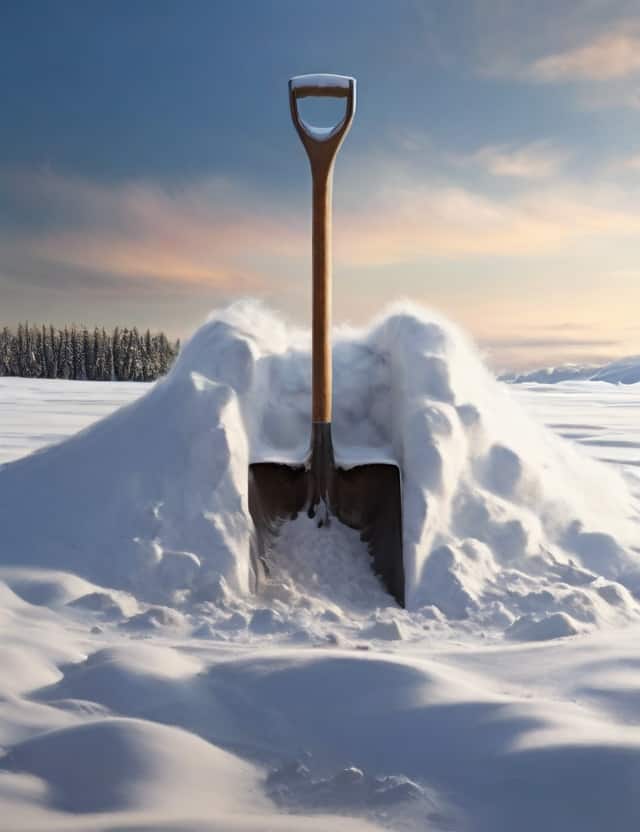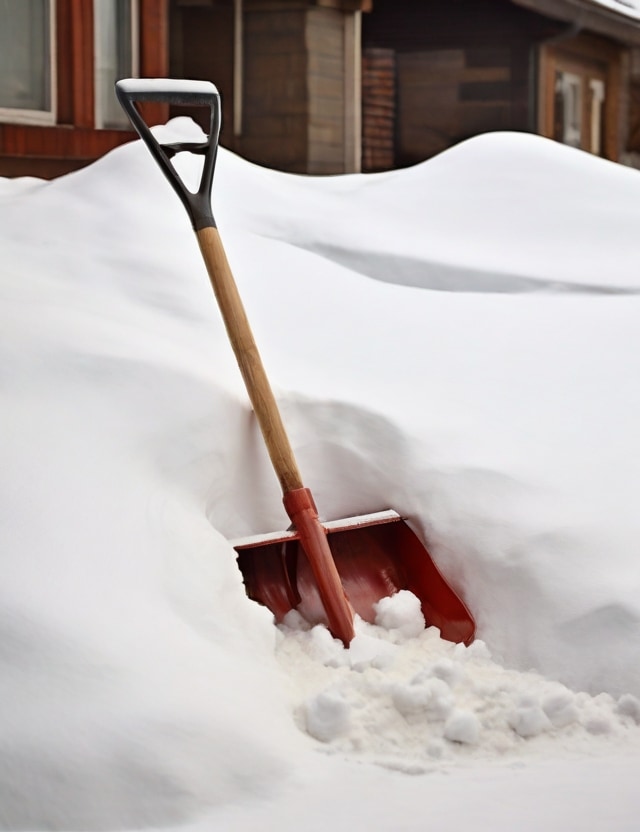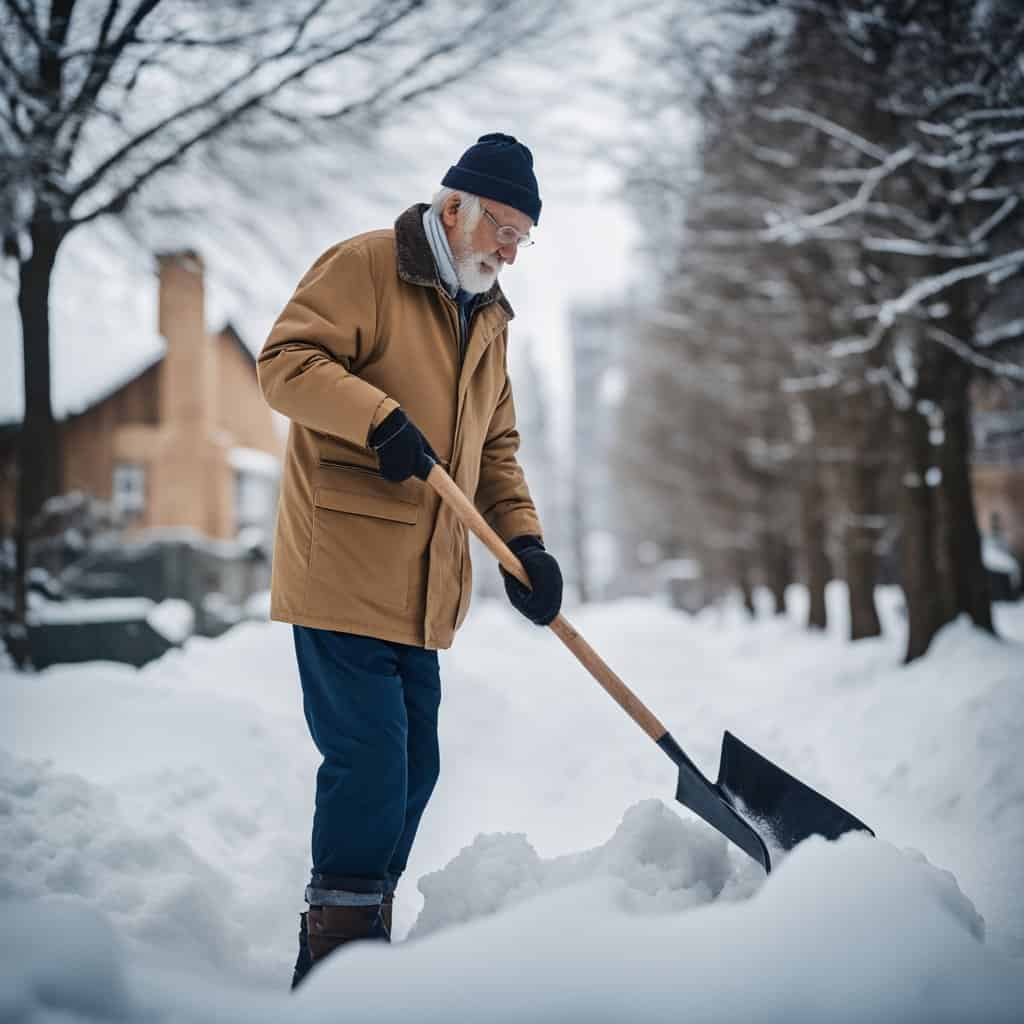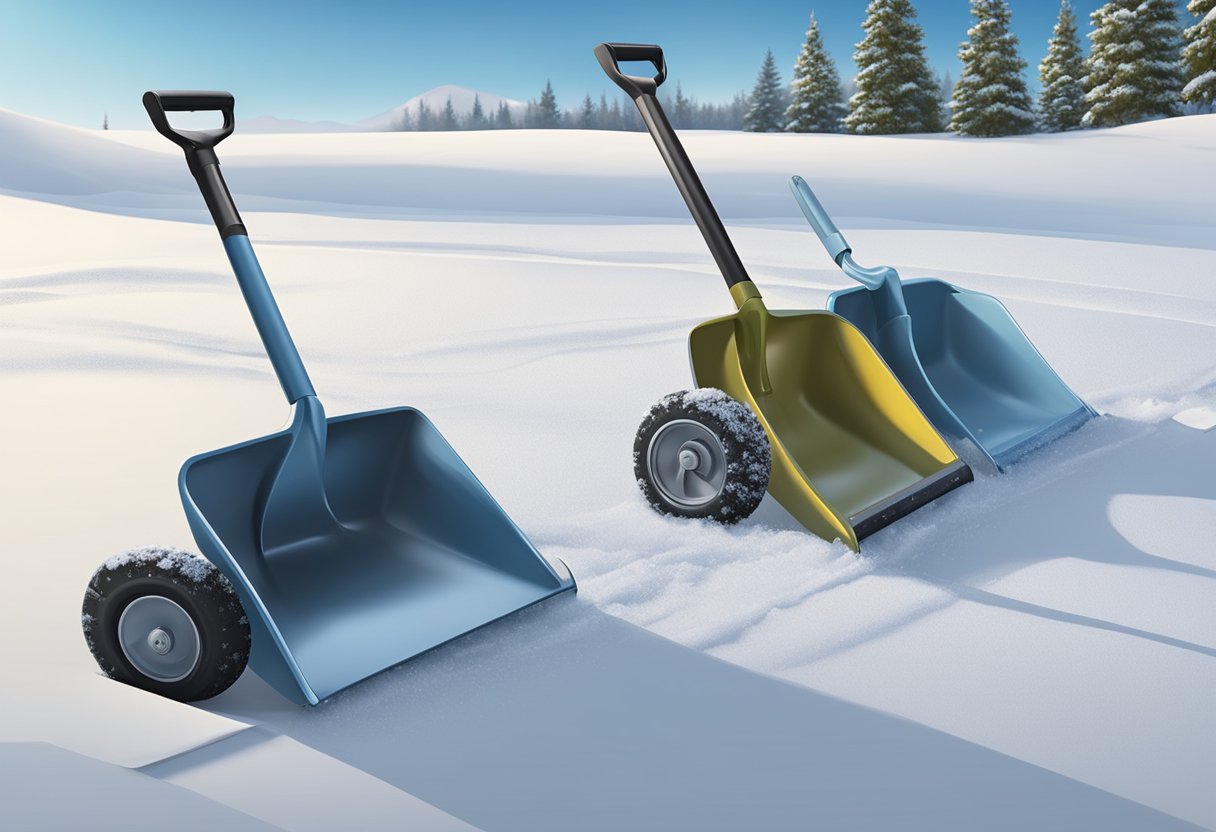Shoveling snow is a challenging task, especially for seniors. It requires physical strength, endurance, and proper technique to avoid injury. With the appropriate equipment, warm up exercises before shovelling, and lifting and throwing snow shovelling techniques for seniors, shovelling becomes a more manageable task.
Table of Contents
Snow Shovelling Techniques For Seniors – Recognizing and Preventing Health Risks
Shoveling snow can be a physical activity that strains the heart, especially for those with a history of heart disease. Listen to your body and stop shovelling immediately if you experience pain, shortness of breath, or dizziness. Hydrate before and after shovelling to prevent dehydration and be aware of the risks of hypothermia and frostbite, especially in cold weather. Avoid shovelling in extreme weather conditions, such as during a snowstorm, when it’s icy outside or at night. If you have any health conditions, consult with your doctor before shovelling.

Snow Shovelling Techniques For Seniors – Tools For The Job
Picking the right tools will make shovelling easier and safer. You can use a lightweight shovel with an ergonomic or curved handle to reduce strain on your back and shoulders. Alternatively, a smaller shovel can allow you to lift less snow at a time, making it more manageable. Then, there is the option of using a snow blower or hiring someone to clear your driveway and sidewalks.
It’s essential to have a snow shovel during winter, and an ergonomic snow shovel is even better since it can reduce stress on our backs and joints, which makes shovelling snow easier and safer. However, people with specific physical needs, those who are tall or short, may find that a standard ergonomic shovel is not suitable for them.
The other tool that will assist is having a cell phone while outside or informing someone where you are for safety reasons.
Snow Shovelling Techniques For Seniors – Preparation
Shoveling snow is hard work, and we can quickly become cold or overheated if not dressed appropriately. Wear warm, waterproof clothing, including gloves, a hat, and a scarf. Layers are essential, as we can remove them as we warm up.
Before shovelling, do some warm up exercises to get your muscles ready. Many believe pre-shovelling exercises are unnecessary, stating that warming up requires extra time, which is inconvenient. People overexert themselves, leading to fatigue before shovelling, or they may injure themselves.
Warm up exercises before shovelling prepares your muscles for the cold and physical activity to reduce the risk of injury. The exercises increase blood flow, making muscles flexible and less prone to injury. Warming up can improve muscle function and joint mobility, making shovelling easier and more efficient. The gradual increase in heart rate during warm up helps prepare your cardiovascular system for the upcoming exertion and mentally prepares you for the task.
The warm up exercises only take a few minutes. I incorporate the following as I get dressed and ready to go outside.
- Marching in Place: Start by marching in place for a minute or two to get your heart rate up.
- Arm Circles: Do large and small arm circles to warm up your shoulders and upper back.
- Side Bends: Gently bend side to side to loosen up your torso and spine.
- Leg Swings: Hold onto a stable object and swing each leg forward and back, then side to side, to warm up your hip joints and leg muscles.
- Lunges: Perform a few gentle lunges to stretch and warm up your thigh and hip muscles.
- Squats: Do a few bodyweight squats to engage your legs, hips, and lower back muscles.
- Torso Twists: With your feet planted and knees slightly bent, gently twist your torso from side to side to warm up your core and lower back.
Snow Shovelling Techniques For Seniors – Shoveling Posture
Maintaining proper posture is the most important thing to remember while shovelling snow. The best shovelling technique for seniors and anyone shovelling snow is to bend at the knees and keep our backs straight, using our legs to lift the snow while avoiding twisting our bodies, as this can cause strain on our backs. Here are a few tips for maintaining proper posture while shovelling:
- Stand with your feet shoulder width apart for balance.
- Bend your knees and keep your back straight.
- Use a shovel with an ergonomic handle to reduce strain on your lower back.
- Hold the shovel close to your body to ease the strain on your lower back.
Snow Shovelling Techniques For Seniors – Snow Removal Strategies
Pushing snow instead of lifting it can be an effective way to remove snow without straining your back. Here are some other tips for effective snow removal strategies:
- Push the snow to the side instead of lifting it.
- Use a smaller shovel or fill a larger shovel no more than halfway to reduce the weight of the load.
- Take frequent breaks to prevent physical strain.
- Clear the snow from sidewalks as soon as possible to avoid ice buildup and make removing it easier.

Snow Shovelling Techniques For Seniors – Post-Shoveling Care
After shovelling snow, take care of your body and your tools. Shoveling is a strenuous activity that can cause fatigue and dehydration. Take a break and drink plenty of water to replenish fluids lost during the task.
After shovelling, stretch your muscles to prevent soreness and injury. If you did the warm up exercises, take a few minutes to repeat these exercises while taking off your outdoor clothing; stretch your arms, legs, back, and shoulders. Cooling down after exercise can also help reduce muscle soreness.
To ensure your shovel lasts for many winters, clean it after each use by removing any snow or ice from the blade and handle, then store it in a dry place to avoid damage.
Rock salt can help to melt snow and ice but can also damage concrete and other surfaces and be dangerous to animals. Use rock salt sparingly and follow the manufacturer’s instructions. Consider using sand or other less harmful alternatives.
If shovelling snow is too difficult or strenuous, consider using a snow blower. Snow blowers can be easier on your body and save time and energy. Look for an ergonomically designed snow blower with features like adjustable handles and easy to use controls.
Final Thoughts
Seniors shovelling snow need to be mindful of their shovelling techniques, wear clothing and sturdy boots, and warm up their muscles before starting. Know your physical limits, ask for help when needed, and consider alternatives like snow blowers or professional snow removal services.
Frequently Asked Questions
What are some tips for safe and easy shovelling?
Prepare your body beforehand, stretching your muscles and warming up for a few minutes before starting. When shovelling, keep your back straight and lift with your legs, not your back. Take breaks as needed and stay hydrated by drinking plenty of water.
What are some common mistakes to avoid when shovelling?
Some common mistakes to avoid when shovelling include twisting your body, lifting too much weight, and using your back instead of your legs.
Are there any tools or techniques that can make shovelling easier?
Several tools and techniques can make shovelling easier, for example, using a shovel with an ergonomic handle, using a snow blower or snow blade on an ATV/UTV, or hiring a professional snow removal service.






